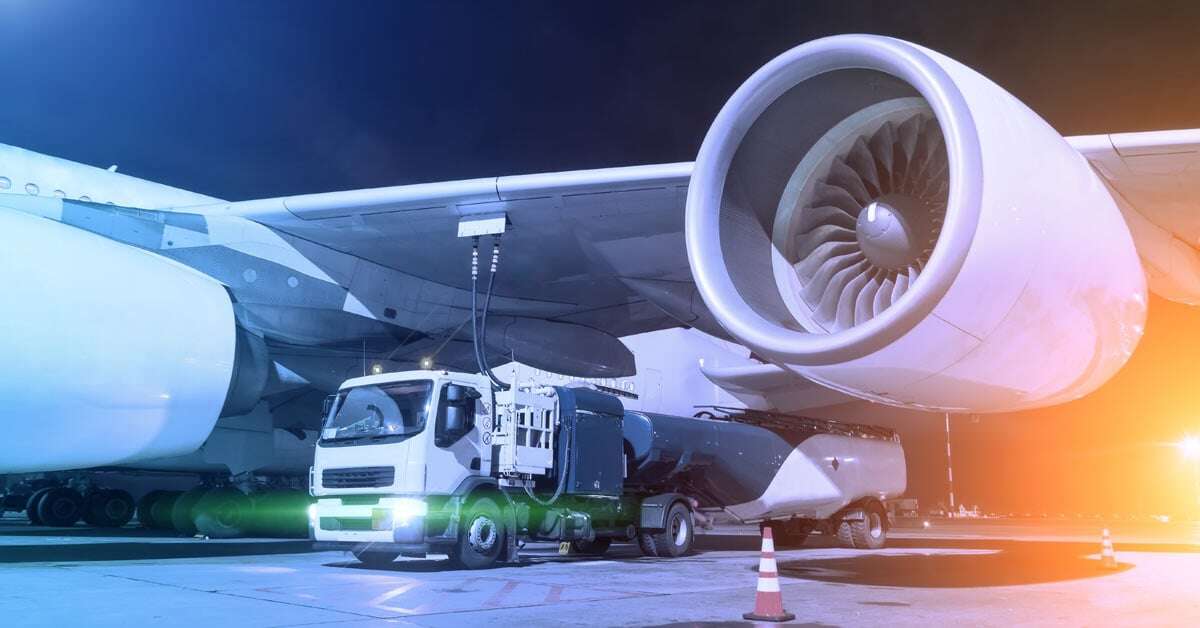3 min read
The Growing Role of eSAF in the Aviation Industry
ResourceWise
:
Oct 24, 2024 12:00:00 AM

The growing need for sustainable aviation fuel has come center stage as we quickly move toward the new year. With mandates requiring substantially more SAF use in the next five to ten years and beyond, increasing production capacity has now become a high priority to accommodate these increases.
Despite the earnest intentions behind mandates and SAF blending requirements, challenges persist. Perhaps the most pressing of those challenges is finding sustainable production pathways and feedstocks supplying them.
One potential avenue for additional SAF supply comes in way of eSAF, or synthetic aviation fuel. This option could fill the production gaps that other avenues will face as demand surges.
What Is eSAF?
eSAF is a synthetic fuel derived from renewable energy sources such as wind, solar, and hydro power. The fuel is produced through a process known as power-to-liquid (PtL), converting green hydrogen and CO2 into liquid form.
The carbon dioxide is typically derived from carbon capture and storage (CCS) techniques. This maximizes the sustainability benefits of this fuel alternative.
Read More: Understanding eSAF Technology and Its Potential in Aviation
eSAF's Potential in the Aviation Market
The market share for eSAF holds promise due to its virtually limitless feedstock supply.
Unlike HEFA (Hydroprocessed Esters and Fatty Acids) fuels, which rely on a finite stream of fats and oils, eSAF can utilize fully sustainable resources. This ensures that even when other SAF types may face resource shortages, eSAF can still be made.
eSAF Costs Inhibit Widespread Adoption
With so many advantages for eSAF, why isn’t its usage more widespread? The simple answer to this is its cost of production.
One of the main drawbacks to broader use of eSAF is its price point and energy requirements to produce. Current prices for this fuel are considerably more expensive than traditional SAF options like HEFA. And the energy resources needed to create the fuel only add to that cost while potentially diminishing its sustainable benefits.
Despite these challenges, scalability remains an optimistic focal point on eSAF’s future. According to IAG (International Airlines Group) CEO Luis Gallego, eSAF is likely more scalable than other traditional sustainable aviation fuels. As feedstock sources strain from higher competing demand, demand for this option could hypothetically grow alongside usage rates.
Current Initiatives in eSAF
Despite pricing concerns, many operations are still investing in eSAF across multiple regions.
China
The China Energy Engineering Group is constructing a major facility to produce eSAF. With an investment of $850 million, this 100,000-ton-per-year plant will harness renewable energy like wind and biomass gasification.
The timing of this announcement aligns with the UK's 2028 eSAF mandate but exceeds the initial UK demand. This means that the operation aims to satisfy a broader European focus. The project's state-backed nature could also establish market dominance in this emerging field despite uncertainties around commercial agreements.
Europe
Meanwhile in the Netherlands, Power2x and Advario are planning a 250,000-ton-per-year eSAF facility at the Port of Rotterdam. Despite local regulatory challenges around power, they plan to import green hydrogen and biogenic carbon dioxide to convert them into SAF through an alcohol-to-jet process.
This novel approach allows the firms to leverage cheaper power from abroad and meet significant portions of future EU demand. Projections place this amount at around 600,000 tons annually by 2030.
The Future of eSAF
As the reality of feedstock material limitations bucks heads with proposed adoption rates and sustainability pledges, many industry players see a solid future for eSAF.
This sentiment is reflected in the RefuelEU Aviation rule, part of the Fit for 55 package which mandates aviation fuel suppliers to gradually increase the SAF share in fuels supplied at EU airports. Current blending targets begin at 2% by 2025 and will progressively scale to 70% by 2050.
To get to these levels, RefuelEU anticipates eSAF comprising half of the mandated SAF by 2050. This will mean much more attention on this fuel’s development and production to meet these projections.
From a shorter-term perspective, the high expense of eSAF will drive away many in the industry from supporting it. Down the road, however, improved R&D will likely help to drive production costs down. If these costs become more competitive, all of the advantages of eSAF will drive much more widespread use.
Get 2025 SAF Market Insights with Our On-Demand Webinar
For those who haven’t already watched, ResourceWise recently held a live webinar event, SAF Market Prepares for 2025 Takeoff. You can now watch the webinar on-demand.
Hosted by Mat Stone, ResourceWise’s VP of Low Carbon Fuels and Founder of Prima Markets, the webinar covers several essential topics:
- SAF market today—and where it’s heading
- Projections for the global market into 2025 and beyond
- How SAF mandates will impact the market
- Key regional supply and demand dynamics (including US, Asia, and EU/UK)
- Insights on production pathways and pricing outlooks
This can’t-miss webinar will keep you informed on what’s important in the rapidly changing SAF landscape. Don’t wait—get access to the webinar today.





